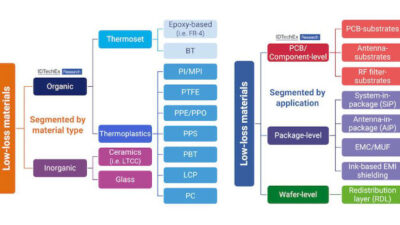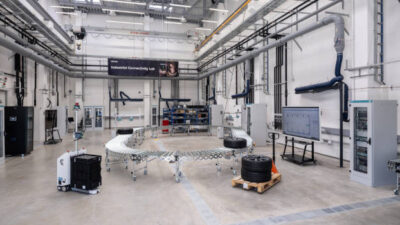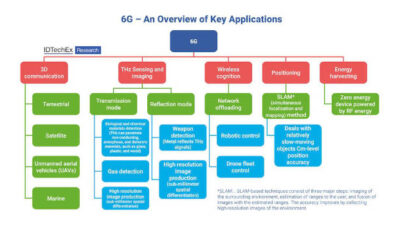Automation experts already have been implementing Industrial Internet of Things (IIoT) architectures for years, prior to calling it IIoT; benefits of digital manufacturing including less downtime, fewer defects, energy savings, and more new product introductions, as explained by Douglas Bellin, Cisco Systems Inc., at the A3 Business Forum, the day after the Cisco spent $1.4 billion for a cloud-based service company, Jasper Technologies Inc.

Implementations of Industrial Internet of Things (IIoT) architectures and the benefits of digital manufacturing deliver real benefits, including 48% less downtime, 49% fewer defects, and 23% increase in new product introductions, according to Douglas Bellin, senior manager, industry lead, Cisco Systems Inc. Bellin made the comments at the A3 Business Forum Feb. 4 in Orlando, the day after Cisco spent $1.4 billion for a cloud-based service company, Jasper Technologies Inc.
A3, the Association for Advancing Automation, is the umbrella organization for the AIA, Advancing Vision, Imaging, Motion Control and Motor Association (MCMA), and the Robotic Industries Association (RIA). A3 holds an annual meeting Feb. 3-5, this year, in Orlando, Fla.
Realities of IoT
Bellin offered other pieces of advice about the IIoT and what it means for engineers.
"Okay, a show of hands. Who likes their IT department?" Bellin asked. Just a few raised their hands in a room with more than 100 attendees, and one was from the information technology (IT) department. Operational technology (OT) and IT personnel will need to work together more closely, Bellin suggested, as migration and changes continue to develop.
"We’ve been doing IoT (Internet of Things) for years," Bellin said, pointing to machine-to-machine (M2M) communications and other information integration efforts.
Reducing pain points
The IIoT resolves pain points that we all have suffered with for years, such as rising energy costs, aging and remotely located workers, globally distributed operations, customer support across time zones, world competition, product proliferation, asset optimization, and others.
The Internet of Everything (IoE) brings people, processes, data, and things together to make better business decisions. While almost every machine has a controller with a lot of data available, data driven manufacturing is not the norm, Bellin said, citing that 86% of 64 million U.S. machines are completely unconnected.
Some say 40% of businesses won’t be the same or exist as we move forward if they don’t do IoT.
Disruptive trends
Disruptive trends are changing manufacturing in many ways such as:
- IT and OT are converging
- Industrie 4.0 and Industrial Internet Consortium (IIC) are advocating IoT
- Original equipment manufacturers (OEMs) have an increased focus on services, such as offering machines as a service, similar to software as a service (SaaS)
- An increase in data-driven manufacturing
- There are more secure operations and machines.
Implementations of digital manufacturing have delivered benefits including:
- 48% less downtime
- 49% fewer defects
- 23% increase in new product introductions
- 16% gain in overall equipment effectiveness
- 35% improved inventory
- 18% less energy use.
"Cisco Systems offers networking tools, so we, like many other advocate that networking is an important part of the answer," Bellin said.
Challenges are many, he acknowledged, including the skills gap, but supply chain visibility is the largest challenge, according to research.
Mazak, a machine tool manufacturer, tested a data-collection box retrofitted outside its machines, which connects to algorithms that allow predictive maintenance.
Cisco, Fanuc, and Rockwell Automation are working together in the robot space capturing stranded data and pushing it into the cloud (remote servers) in a capable form. This provides predictive maintenance with a two-week lead-time on failures. Bearings failures and resulting unplanned downtime and related costs and fines are falling dramatically as a result. The goal is to have 3 to 5 weeks of failure prediction.
Sub-Zero and Wolf Appliances, based in Madison, Wis., opened an Arizona factory. After an engineer often flew back and forth, an interface offering online video eliminated most troubleshooting and unnecessary trips for the engineer. The interface also allows collaboration among the designer, factory worker, and supplier to resolve issues and get back up and running, reducing downtime.
Applied to oil rigs, such technologies could save millions of dollars in a short time by getting things fixed without loss of translation issues.
"See what you’re saying to better understand," Bellin said.
Where’s the IoT going?
The connected journey means rapid commissioning of machines, greater security, start-up templates, a machine integration platform, OEE monitoring, data offload via MTC and OPC interfaces, scaled factory data acquisition, and advanced security.
Then IIoT will enable machines as a service, a security framework, machine-to-cloud communications, secure bi-directional communications, and remote access.
Finally, IIoT will deliver advanced machine automation, time-sensitive networks (TSN), high-speed standards, advanced controls, and human-machine interface (HMI) integration with analytics.
Digitization creates foundation of new applications and outcomes. Fanuc has found tremendous savings with problem prediction.
Real-time analytics
In another example, a high pressure casting machine offers real-time analytics, performance projections, real-time data collection, with all sensors connected. A 5% revenue increase resulted with continuous real-time measurements and analysis, inline quality inspections, and instant rework.
This accelerated the journey to value-added services. If softer U.S. economy results in 2019, as some economists predict, offering services will keep machine builders ahead of the curve.
"Manufacturing is moving from product-centric to services-centric, led by a digital transformation where services and the digital journey converge. This delivers deeper insights into product and customer needs," Bellin said.
To capture value, manufacturers must build foundational capabilities of a digital business. These include: Build a hyper-aware organization, make informed decisions, execute quickly, and outpace the competition. This also brings in the artificial intelligence space with algorithms to make better decisions and prevent failures.
Mark T. Hoske, content manager, CFE Media, Control Engineering, [email protected].
ONLINE extra
See related articles from A3, linked below.




